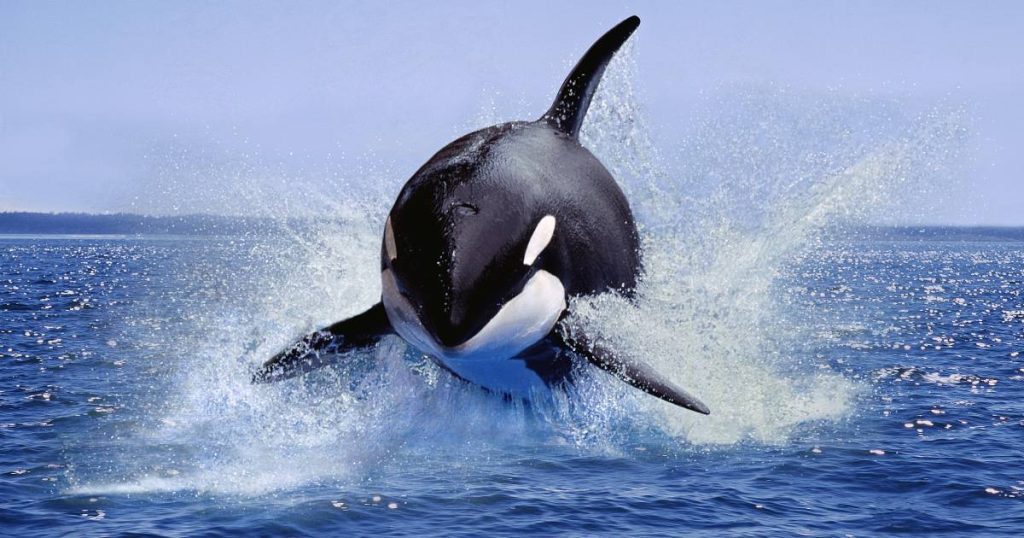A pod of killer whales from far away is currently causing a scene in California. Local media hail the “National Geographic moments” when whales are released. Whale watchers enjoy it. “They seem to love social media as much as teenagers,” one captain said.
California is under the influence of storms and high waves these days, but it's also being hit by a visiting pod of killer whales that look very camera-friendly. Dozens of them have been spotted in the past three weeks. The big visitors are said to come from the waters of Mexico and Central America.
Much to the delight of whale watchers, who had booked trips to watch gray whales, but were enjoying the unprecedented spectacle for several days. Whale-watching boat captains report that high-jumping killer whales sometimes pay little attention to boats carrying tourists; They seem to be indifferent to people watching them while they hunt, which is also rare, according to one expert. “They came right up to the boat and stopped to watch people,” one captain reported.
Bottlenose dolphins
It is not known why southern killer whales are suddenly spending so much time in this area this year. One explanation may be that the waters off the coast of California are currently warmer as a result of the El Niño phenomenon. The abundance of their main prey – bottlenose and common dolphins – may also have something to do with it. Visitors seem to have understood well that there are currently large pods of dolphins swimming in California's waters, sometimes numbering between 2,000 and 4,000 animals. They are easy to catch compared to other whales.
look. The whale follows the kayaker and this creates a special moment
Harsh pictures too
The latter produces memorable but sometimes brutal images for whale watchers, such as the time killer whales surrounded a dolphin and dropped the animal before eventually killing and half-eating it. “One of the killer whales swam past the astonished whale watchers and expelled a red mixture of air, mucus and dolphin remains from its blowhole,” a witness told the Los Angeles Times.
Other groups of killer whales traditionally inhabit these California waters; About 105 have been counted as eating marine mammals and are found year-round, according to the Alaska Department of Fish and Game. In 2008, the National Oceanographic and Atmospheric Administration (NOAA) compiled a catalog of individual killer whales known from this area. This included 192 specimens from 52 different groups that lived in the region. But there are probably many more now, as the animals come from waters farther south.
Different groups of killer whales are not expected to come into contact with each other. Tyler Askari, of Harbor Breeze Yacht Charters and Cruises, based in Long Beach, is clearly happy with the visitors. “Even though killer whales are native to California, we haven't seen these animals in Southern California in the last few years. It's incredible.” The orca sightings began three weeks ago. Since then, Harbor Breeze has urinated on 61 orcas. Although this is in sharp contrast to the number of sightings of fin whales, humpback whales and blue whales, it is the largest number of spotted killer whales in years.
Free unlimited access to Showbytes? Which can!
Log in or create an account and never miss a thing from the stars.

“Lifelong food practitioner. Zombie geek. Explorer. Reader. Subtly charming gamer. Entrepreneur. Devoted analyst.”











More Stories
Revealing the ten countries that support Ukraine the most
Funny protest against mass tourism in Galician village
Kamala Harris has wind in her sails, but Trump can still win